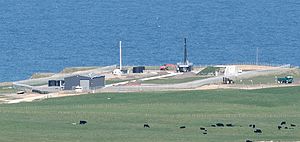There are major national players in space exploration and exploitation such as the U.S., Russia, China and the European Union. There are minor national players such as India, Japan, Israel and others. And there are new players who want to get into the game such as New Zealand.
Rocket Lab is a U.S. company in the international space industry. It was founded in 2006 by Peter Beck from New Zealand. A primary financier named Mark Rocket was a director at R.L. from 2007 to 2001. R.L. has a New Zealand subsidiary and carries out launches from New Zealand. They bill themselves as the first private company in the Southern Hemisphere to reach space. In 2010, R.L. received a grant from the U.S. government to “… study a low cost space launcher to place nanosatellites into orbit.” Since 2013, R.L. has obtained tens of millions of dollars from investors.
In late 2009, a tiny Atea-1 suborbital sounding rocket was successfully launched by R.L. from Great Mercury Island off the Coromandel Peninsula of New Zealand. It carried a minimal payload of a few pounds which had no telemetry and was not recovered.
In July of 2015, R.L. identified a possible site for a launch complex on Kaitorete Spit near Chrischurch, the largest city on the South Island of New Zealand and a regional capitol. They hoped to have a launch complex constructed by the end of 2015. In November of 2015, R.L. announced that it would not build a launch complex at the Kaitorete Spit because of problems in obtaining resource consents for development on the Spit.
In November of 2015, R.L. announced that they had chosen an alternate location for a launch complex on the Mahai Peninsula on the North Island of New Zealand. The officials of the relevant government bodies were eager to work with R.L. and they approved R.L. requests in a week. The new facility is licensed to launch a satellite once every seventy two hours. The license they were offered for the Kaitorete Spit would only have allowed one launch a month. The launch complex at Mahai Peninsula opened September of 2016.
While working on launch sites, R.L. designed and built the Electron, a lightweight launch vehicle that can carry up to three hundred and thirty pounds to a three hundred mile sun-synchronous orbit. (“… a geocentric orbit that combines altitude and inclination in such a way that the satellite passes over any given point of the planet's surface at the same local solar time.” – Wikipedia) The Electron is a two-stage liquid fuel rocket that was constructed mostly of carbon composites to reduce weight. The engine was made by 3D printing with a metal powder.
The Mahai facility opened in September of 2016. There is an exclusion zone of five miles from the launch pad at the complex. After the site becomes commercially operational, the exclusion zone radius will be reduced. The first test launch of an Electron rocket took place in late May of 2017.
R.L. developed the Electron in the belief that the growing business in the launch of small satellites was not being well served by the current fleet of big launch vehicles. It is estimated that when their business matures, R.L. will be able to offer five million dollar satellite launches.
Rocket Lab Launch Complex:
